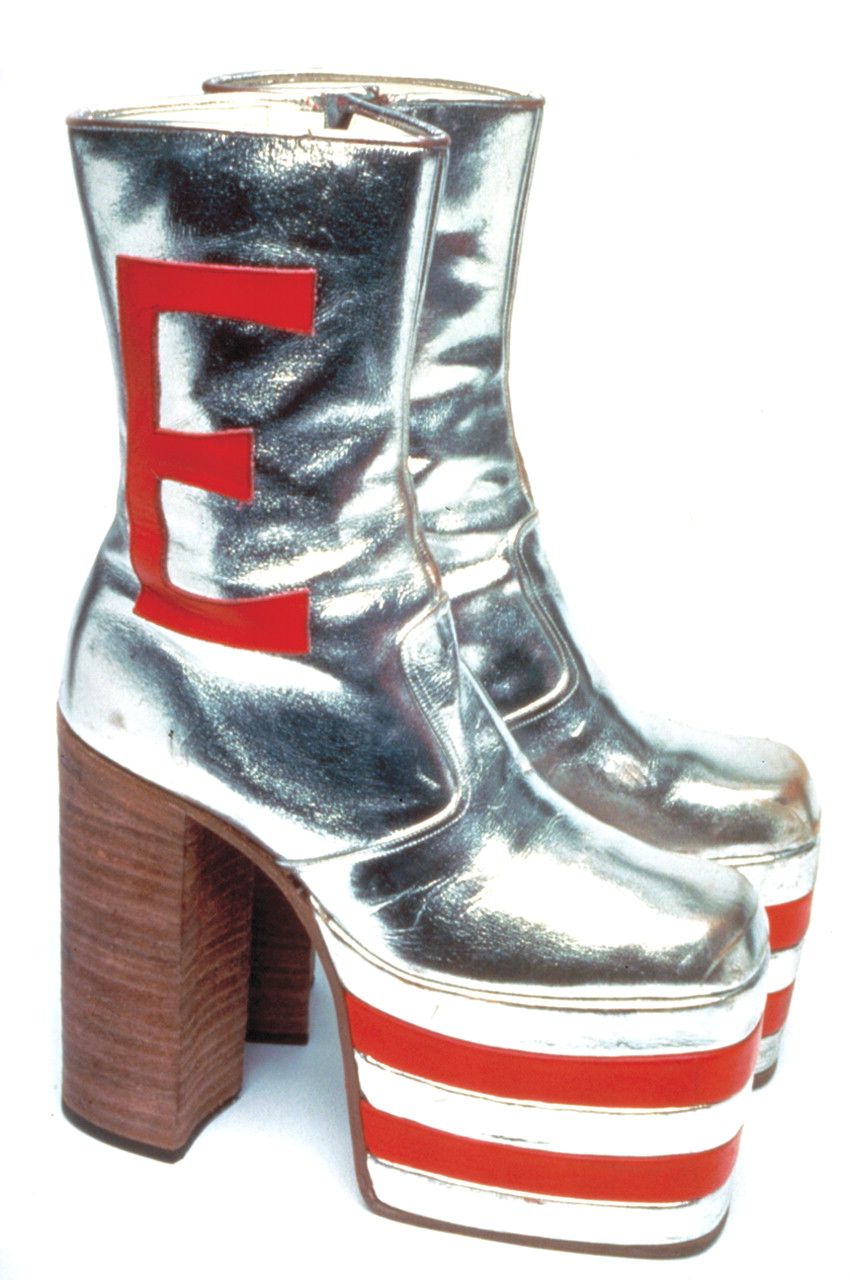Imelda Marcos doesn't have anything on Toronto's Bata Shoe Museum. That's because while she owned about 1,500 pairs of shoes, more than 12,000 shoes are on display in the museum, some of which were worn as long as 4,500 years ago.
While many who stroll through the museum are shoe fanatics, history buffs are also enthralled by the museum.
Visitors learn that shoes are not just a fashion statement, but a reflection of local culture, society, religious views, and social status.
The museum features shoes worn by popes, sports stars, rock musicians, and royalty throughout the ages: for instance, a pair of Princess Diana's dress shoes and Queen Victoria's ballroom slippers are on display, as are the ceremonial shoes of Pope Leo XIII and the sprinting shoes of Olympic gold-medal winner Harry Jerome.
Some of the more popular exhibits include Elton John's silver and red platform boots from 1973, Marilyn Monroe's red-leather pumps, and John Lennon's “Beatle boots” from the early 1960s.
Some of the museum's oldest footwear includes wooden sandals from about 2,500 B.C., which were designed to take those who had died on a journey into the afterlife.
There is also a collection of shoes worn by members of indigenous tribes in North America, the Arctic, and Russia. Alaska natives, for example, wore boots made of seal skin. Socks worn inside the boots were usually made of woven grass.
According to the Bata Museum Web site, it was only in the 14th century that shoes began to be constructed from “quality textiles and fine leathers” and became a form of aesthetic expression and a new way to display social status.
Pointed-toe shoes were one of the first trends in shoe design and appeared in 14th century Poland. As the trend swept across Europe, “Edicts were proclaimed limiting the length of the toe,” according to the Web site.
Museum founder Sonja Bata began collecting shoes as a hobby in the late 1940s while traveling around the world on business trips with her husband, an international shoe manufacturer, and had “personal contact with most of the great stars of shoe design,” she has said. In 1979, she founded the Bata Shoe Museum Foundation to manage her growing collection of shoes and sponsor research on the role that shoes have played through history.
The museum is not only known for its shoes, but its architecture.
Architect Raymond Moriyama designed the museum, which opened in 1995.
The museum looks a little like a shoebox with its lid resting slightly askew, which is no accident.
Moriyama is quoted as saying, “When I first viewed the collection [of shoes], I was impressed by the array of shoe boxes that protected the shoes from light and dust.”
Two of the museum's outer walls angle inward from roof to sidewalk.
At the museum's entrance, a glass wedge protrudes through the building's limestone and enables passersby to see the lobby, five-story steel staircase, and a 42-foot high window in the rear of the building.
Visitors usually begin their tour with the exhibit “All About Shoes: Footwear Through the Ages,” which gives an overview of shoes that have been worn through different periods of history.
The exhibit “Icons of Elegance: Influential Shoe Designers of the 20th Century” features the shoes of Salvatore Ferragamo, Manolo Blahnik, and Christian Louboutin, among others.
The award-winning “Beads, Buckles, and Bows: Four Hundred Years of Embellished Footwear” features 300-year-old Italian dress shoes made of apple-green-colored silk, embroidered ankle boots from 19th century France, and ornately beaded Italian heels from a more modern time, the late 1960s. This exhibit explains how sequins were once made out of beetle wings, fish scales, or mother of pearl. Nowadays, sequins are decorative but were once worn to repel evil and promote fertility, according to museum literature.
Another exhibit opening in March will feature the shoes of Chinese children throughout the ages.
The Bata Shoe Museum is located at 327 Bloor Street West. More information is posted at<www.batashoemuseum.ca/>.▪

